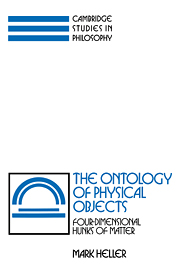Summary
This text is devoted to developing an ontology of four-dimensional hunks of matter. I argue that every filled region of spacetime is exactly filled by one such object and that any one of these objects has its actual spatiotemporal configuration and location at every world at which it exists. This ontology should be contrasted with what I take to be our standard ontology, according to which one and the same three-dimensional object exists in its entirety at several times and at several worlds, having a different spatiotemporal shape and location at many of these other worlds. My arguments can be taken to support either of the following conclusions: (A) the standard ontology should be rejected and the hunk ontology accepted; (B) the standard ontology must really be the hunk ontology rather than the ontology of three-dimensional objects that exist at worlds at which they have different configurations and locations. For the most part I present my arguments as a defense of (A), but I will also show how to read them as a defense of (B).
Since I hope to argue for the hunk ontology over the “standard ontology,” it is natural that this book should contain both a constructive project and a destructive project, though it is crucial that the two projects not be completely separated. Much of the constructive project is closely connected to the work of David Lewis and much of the destructive project is closely connected to the work of Peter Unger.
- Type
- Chapter
- Information
- The Ontology of Physical ObjectsFour-Dimensional Hunks of Matter, pp. ix - xivPublisher: Cambridge University PressPrint publication year: 1990



